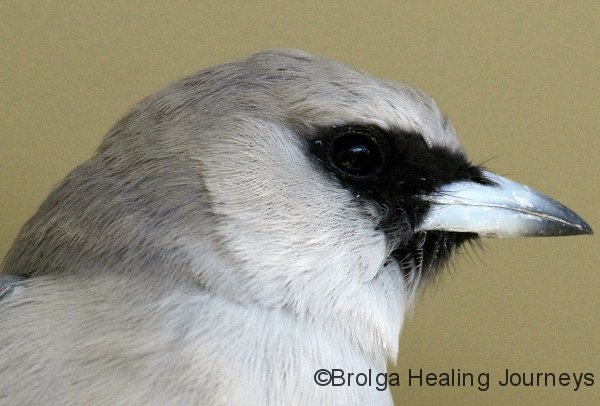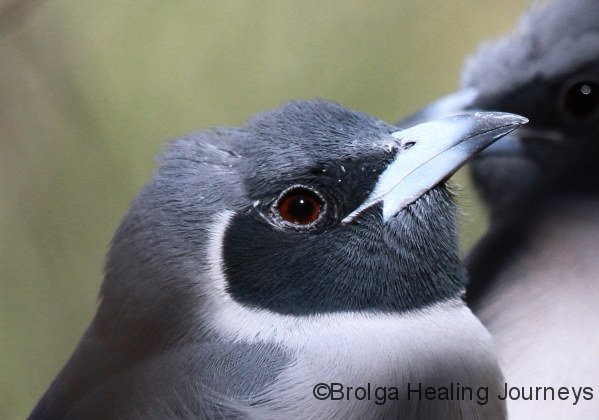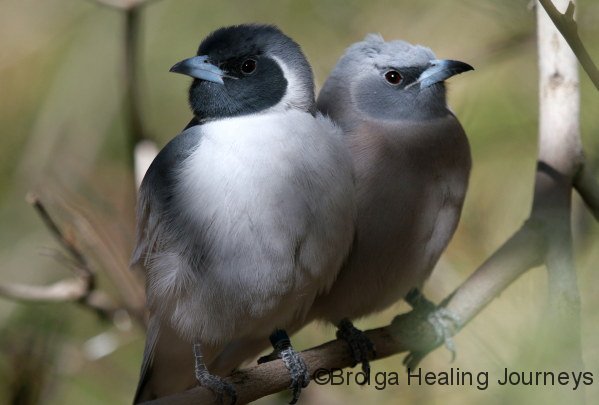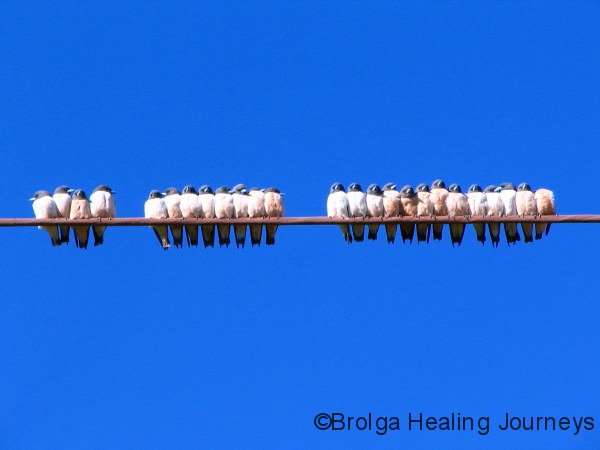Woodswallows
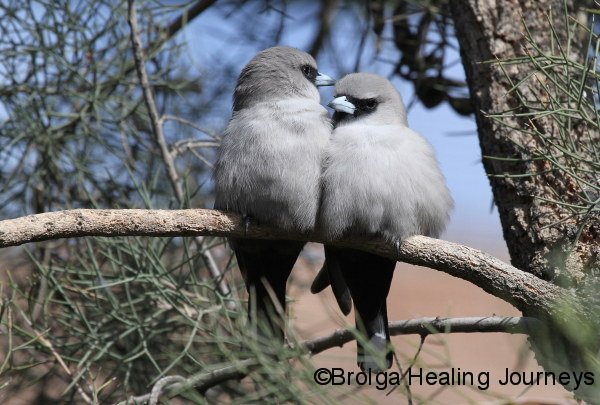
The Woodswallows are not particularly well known birds, even though they are widespread across Australia. They are skillful fliers, catching their insect prey on the wing. In the case of the Little Woodswallow, they are often seen soaring high above mountaintops or rocky outcrops to feed. Many times during our travels they have been companions to us, of sorts, as we have taken in the view after a strenuous climb, and notice these little birds zooming around nearby. Their clever aerobatics seem almost mocking of our clumsy, earthbound ways.
The first time we encountered the Little Woodswallow was in Kalbarri National Park in Western Australia. I was amazed to see a little bird that looked as though it had been held by its legs and dipped in dark chocolate. Its body and head are, after all, dark chocolate brown and its wings darker still. At first we didn’t know what it was, but our trusty bird books saved the day, and the Little Woodswallow was known to us. We have since seen them in many places including the Pilbara, and more recently, in the MacDonnell Ranges west of Alice Springs. As their name suggests, they are the smallest of our Woodswallow species, at only around 12 to 13cm in length.
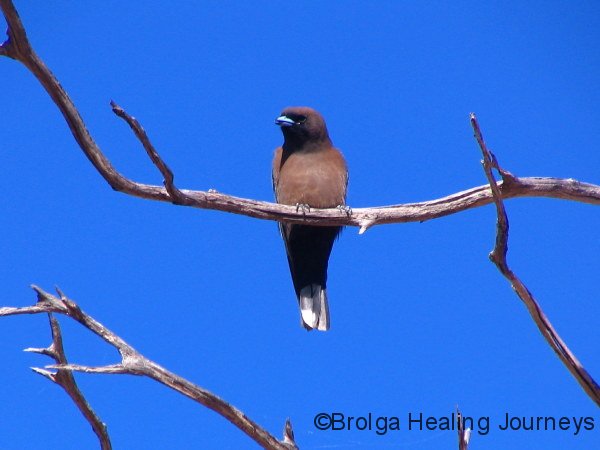
The next species we encountered was the endearing White Breasted Woodswallow. This is the most social of the Woodswallows, often seen in flocks of up to 50 birds. I say endearing because these birds love to line up next to each other along branches or, in our modern world, along power lines. On cool mornings they huddle together all puffed up, and form a delightful spectacle.
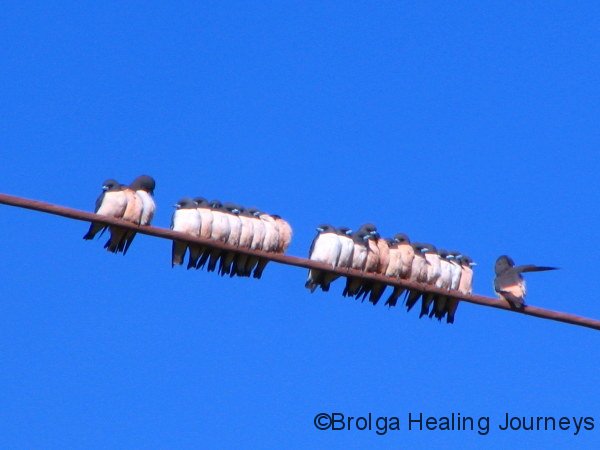
We have seen two other species to date: the Black Faced Woodswallow and the Masked Woodswallow. Now, the naming of these species seems to me a little confusing. We have often remarked that the naming of bird species defies logic, and when I think about it, the comment applies equally to the naming of reptiles and plants. The Masked Woodswallow has an entirely black face, while the Black Faced Woodswallow has a black area, like a mask, across it eyes and part of its face. In other words, the names seem to be the wrong way around! Anyway, have a look for yourself and see what you think. Regardless of what they are called, they are both beautiful species. The bonded pairs of each appear to be romantically inclined, the way they sit snuggled together on branches.
